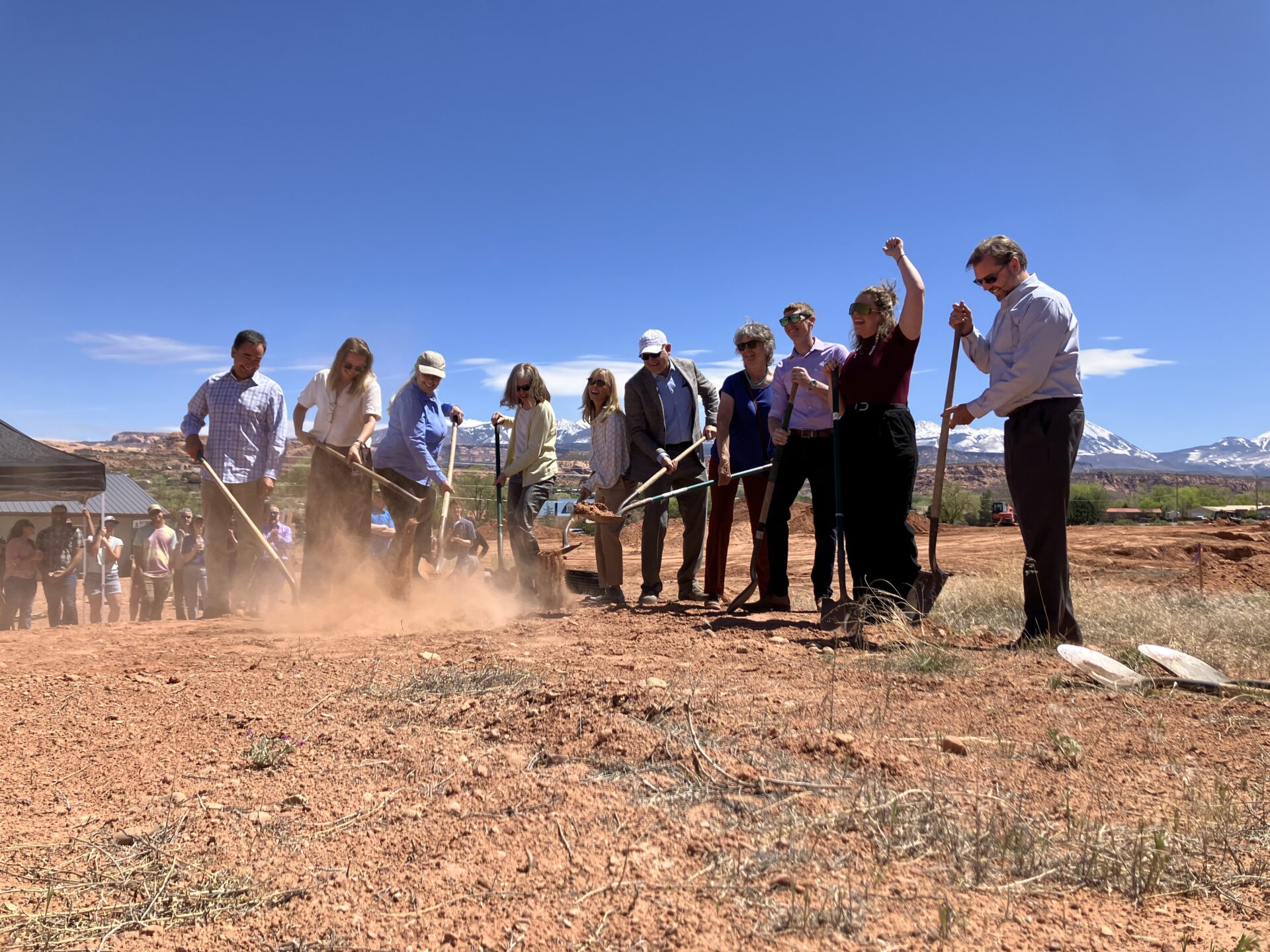If you’ve been wondering about that huge dirt pile at the site of the future Grand County Middle School, speculate no longer. It is soil dug up from the school’s old soccer field – dirt that needed to be compacted to make the ground there more stable and uniform.
The new middle school is to be built on the old soccer field that’s behind the existing school building, which dates back to the 1950s.
But first, the ground needed to be compacted to certain specifications to support a new foundation, said Grand County School District Business Administrator Robert Farnsworth.
The current school’s vocational center is slated for demolition later this fall, while the current middle school building will be demolished after students move into the new building.
If all goes according to plan, the new Grand County Middle School should be completed by December 2020, with students to begin attending classes at the new school in January 2021.
The school board has been raising capital levy (property tax) since 2012 to pay for bonds issued by a local building authority to cover the cost of the new school construction, Farnsworth said.
The decades-old middle school building was in need of repairs and upgrades. It was decided that it would be more cost-effective to build a new school than to renovate the current building.
“Infrastructure here is a concern,” Grand County Middle School Principal Cari Caylor said. “Currently, the wiring is antiquated. We’re behind what we need,” to support the computer network system needed these days.
The Moab Sun News reported last year that cost estimates for renovation of the existing school would run $10-20 million, whereas a new building is estimated to cost $24 million.
“Newer buildings are designed to last 75-100 years,” Farnsworth said.
Salt Lake City’s MHTN Architects were hired to design the school, which will include “open” classrooms with glass interior walls and wider hallways that will include “collaboration spaces” where groups of students can work, Farnsworth said.
Though renewable energy isn’t part of the design, architects are making use of natural lighting, Farnsworth said. The school board had considered using ground-sourced heating, but after test drilling found a band of rock in the soil that would require a special drilling method, that idea was discarded as too costly.
However, “We were assured it will be an energy-efficient building,” he said.
Caylor said students are excited about attending a brand-new school.
“It’s going to be a more modern, more technology-friendly school, with more modern classrooms,” Farnsworth said.
Not far from the new construction site, the new Radcliffe Hotel on Uranium Avenue is set to begin construction in September. Because of these two large-scale projects happening in close proximity at the same time, the city decided to alter the traffic flow to protect student, driver, and pedestrian safety, City Engineer Chuck Williams said.
“We came up with the best plan to mitigate construction projects’ impacts,” he said. “People seem to be adapting to it.”
Although the hotel construction doesn’t start until September, traffic flow changes went into effect in August.
“We didn’t want to change the traffic pattern during the school year,” Williams said.
Uranium Avenue from Main Street to 100 East will be one way eastbound, while 100 East will be one way northbound to Grand Avenue. Those traffic control measures are expected to be in effect for the next 18-24 months.
The middle school’s vocational center is getting a lot of use from the community before its demolition. The Moab Valley Fire Department used the building for training purposes on Wednesday, August 21.
Community Rebuilds and other nonprofit organizations have also been invited to come recycle or repurpose wooden cabinetry, doors, and other items from the vocational center, Nassau said.
The school district also owns property on Mill Creek Drive, where the school board has discussed as a possible location for employee housing or another school if Moab’s student population continues to grow, Farnsworth said.
“It’s going to be a more technology-friendly school, with more modern classrooms.”
Robert Farnsworth




